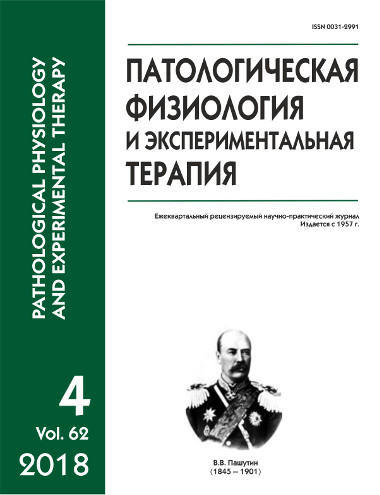Specificity of cholinergic mechanisms of learning and memory in rats with different levels of ability for spatial contextual learning in the Morris water maze
Abstract
Aim. In order to expand the knowledge about neuronal organization of the cognitive functions required for understanding plastic processes in the brain, we investigated the cholinergic synaptic organization of learning and memory functions in rats with different cognitive abilities. Methods. Rats were trained on a contextual situation model in the Morris water maze. At 2—3 days after the end of training, animals were decapitated, and subfractions of synaptic membranes and synaptoplasm of light and heavy synaptosomes were isolated from the cortex and the hippocampus by centrifugation. In synaptic subfractions, activity of the key enzyme of cholinergic neurons, choline acetyltransferase, was measured. We compared the test results (latent period to reach the hidden platform) and the enzyme activity in capable (lower quartile) and incapable of learning rats (upper quartile). Results. The following was found: 1) differences in the cholinergic organization of studied functions in capable and uncapable of learning rats during training, including: positive correlations of choline acetyltransferase activity in synapses of projection neurons in the cortex of capable rats with latency to reach the platform at intermediate stages of training and in the hippocampus ofincapable rats at late stages of training; multidirectional correlations of choline acetyltransferase activity in synapses of hippocampal, presumably, interneurons (heavy synaptosomes) in capable and incapable rats at early and late stages of training; 2) distinctness of the cholinergic organization of functions at all stages of training. Conclusions. The study demonstrated for the first time a specificity of the cholinergic organization of functions in spatial situational learning of rats with strong and poor learning abilities and a selective role of hippocampal cholinergic interneurons at the initial stage of learning and in memory consolidation.






